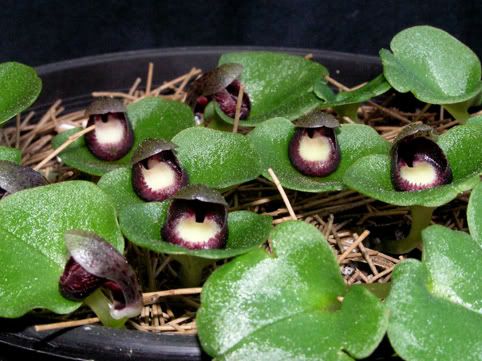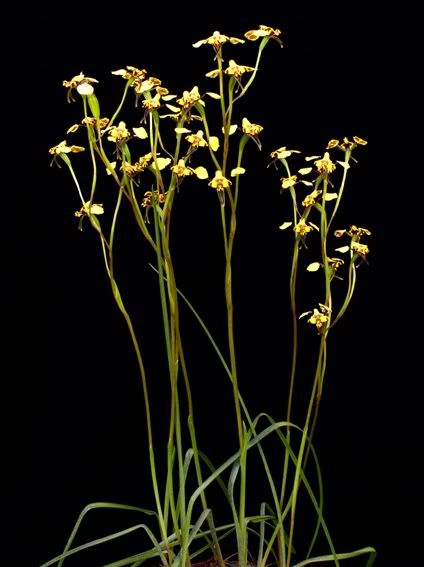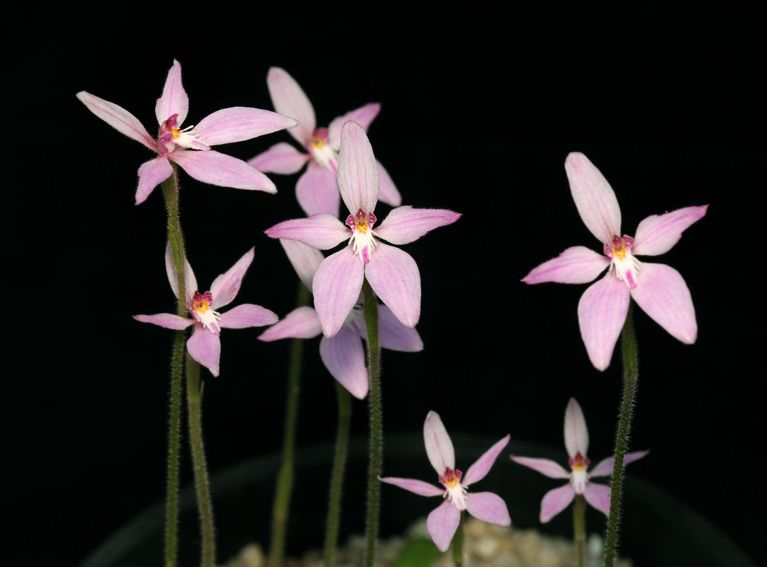Quote:
Originally Posted by Andrew

King and Kip,
If it helps for designing your mix, the air filled porosity of my terrestrial mixes is ~18%-20% for Corybas, ~24-26% for Caladenia and ~22-24% for everything else. I don't claim to be a particularly talented grower but these are the type of results I get on a good day.
|
I'm sorry, I'm not quite understanding. Are you saying that there doesn't have to be too much air in the mix, that I can pack on more of the finer grained decomposed granite in relation to the granite chunks? Can you please elaborate?
---------- Post added at 10:07 AM ---------- Previous post was at 09:30 AM ----------
For anyone interested in knowing how I grew
Disa sagittalis, this is how I did it. (Now keep in mind, I don't really know the future of this guy, so I'm only mentioning this as I currently understand it to be, it could change down the line as my understanding of this plant changes...)
Disa sagittalis, yeah, it is a terrestrial, but I'm going to be far more specific here...
It is actually more of a lithophyte. They grow between rock crevices in the wild. The rocks they grow around is a rock called dolerite (if I'm not mistaken it is also regarded commonly as "sauna rocks").
Now, I'm not saying the rocks might be important, but what I want to impress on is this - these guys grow between rock crevices, and debris (which is mostly inorganic and is most likely something along the lines of decomposed granite) is caught in between these crevices.
So, really, Disas in general, should not be treated like a "terrestrial" that grows in organic soils. None of them really grow in organic soils at all. I've done a ridiculous amount of research on Disas, and not a whole lot of things in my research suggests that any Disa grows in organic type soils - they are all growing in mostly inorganic type soils.
So my mix is actually this:
1. Mostly granitic rocks. Specifically, it's what the sellers of rocks call "Palm Springs Gold".
2. Whatever amount of decomposed granite can fit into the crevices is whatever it is. And this really is not a whole lot of fine grained sand or silt.
Disa sagittalis specifically grows in moderately bright indirect light - not super bright light. Not all Disas grow in bright light.
When I water
Disa sagittalis, I let it dry out completely. I mean, I let this thing dry out completely for days sometimes. That's because, yeah, you might read somewhere that they grow along streams like
Disa uniflora does and all that jazz - but they really don't grow as close to the stream banks as
Disa uniflora or
Disa tripetaloides does. They grow further away from the water than these Disas do.
Like I said earlier,
Disa sagittalis is a winter growing/summer dormant Disa. They grow cold - intermediate (36 F - 85 F, ideally). These
cannot tolerate frosts.
Disa sagittalis comes from lower elevations than, say, a
Disa uniflora does. However, they can tolerate short bouts of moderate heat in the 90's F.
The general description of the environment many Disas come from is semi-arid desert. And they are South African plants.





































 Linear Mode
Linear Mode


